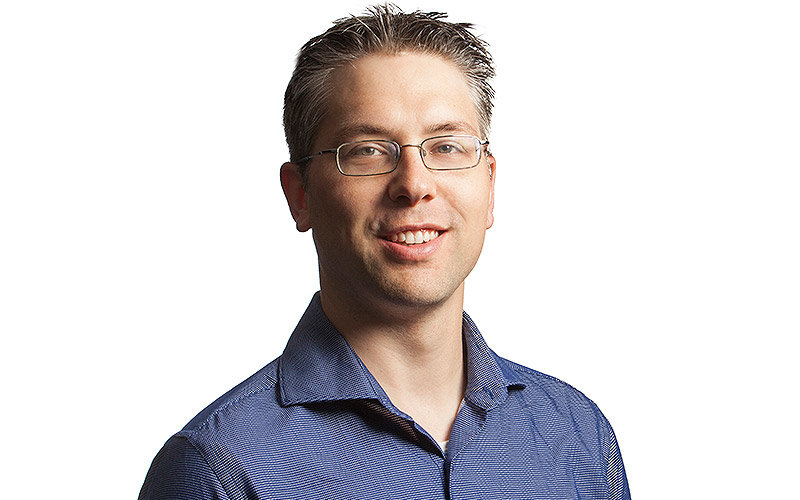
Following his postdoctoral fellowship at Aarhus University in Denmark, Michael Groves began his teaching career at Cal State Fullerton this fall. Groves, an assistant professor of chemistry and biochemistry, has authored 20 peer-reviewed publications, contributed to the development of an online education portal and holds a patent related to the environmentally-friendly fabrication of very small chemical reactors.
Groves received the prestigious Governor General of Canada’s Academic Gold Medal for his doctoral studies and earned his Ph.D. in chemical and material engineering from the Royal Military College of Canada. He holds a master’s degree in physics from Queen’s University and a bachelor’s degree in physics from the University of British Columbia.
What inspired you to go into your field and what was the defining moment?
Learning about why the sky is blue or why the sun shines has always peaked my interest. Since I was young, I have enjoyed understanding the physical world around me. It wasn’t until the end of my undergraduate studies when I realized I could continue to do that professionally in graduate school and as a professor.
How do you engage students in your classes and/or your research?
I want students to feel welcome and to know that that their opinion matters. I try to foster a supportive environment where everyone can contribute to a collective effort — educational or research — and benefit from everyone’s input.
What are your research interests?
Chemical reactions happen when molecules come in contact with each other. I want to understand how these reactions change when molecules come in contact over a surface. These effects determine if specific chemical reactions can occur and can have importance in many fields, including new sources of energy, such as fuel cells, and pharmaceutical-related applications.
A complimentary research interest involves understanding the shape of new, exotic surfaces. The atoms in a material can be arranged in many different ways and finding the best configuration is not always straightforward. Given that the shape and composition of a surface can have profound effects towards catalyzing certain chemical reactions, it is paramount to develop new tools that can be used to computationally screen for favorable properties.
What changes do you envision in your field five years from now?
I envision that computational screening of substances will play an even greater role in finding the next generation of materials. As a result, theoretical methods that can autonomously screen for certain properties will be valued so that expensive trial and error synthesis can be avoided.
What is one fun fact most people don’t know about chemistry?
Chemistry is one of the principle reasons why the human population exploded at the beginning of the 20th century. The Haber-Bosch process, which converts nitrogen and hydrogen gas into ammonia, was the first step towards industrial-scale fertilizer production. Without it, we would not have been able to grow enough food to support such rapid population growth.